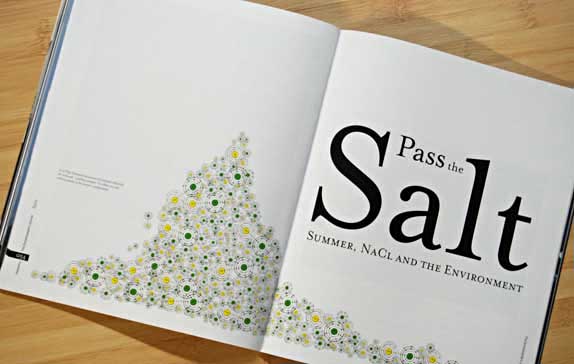Salt
Every year, millions of pounds of salt and fertilizer are spread across glaciers and snowfields in the northern hemisphere in order to provide summer snowboarding to the masses. But at what cost to the environment?
Every summer since the 1950s, salt has been cast across the Palmer Snowfield on Mount Hood so that turns can be made through September. Last year it was 1.2 million pounds. The year before about 1 million. This practice isn’t confined to Hood; wherever there is off-season riding, from the Blackcomb Glacier to Lauberhorn, Switzerland, chances are some form of salt is being used. Why? The salt reacts with the moisture in the snow and forces the separation of the sodium and chloride ions. This reaction requires energy, and that energy comes from heat held within the snowpack. Effectively, salting pulls heat out of the snow and leaves behind a super-cooled, firm snowpack, which is required to hold speed and keep man-made features intact. It’s better riding through chemistry; it’s also controversial…
Subscribe to see the entire piece.
